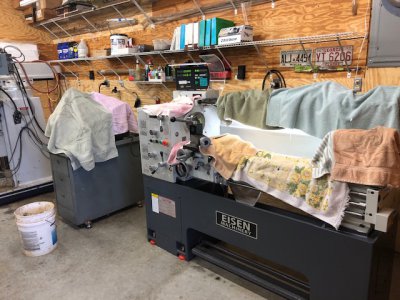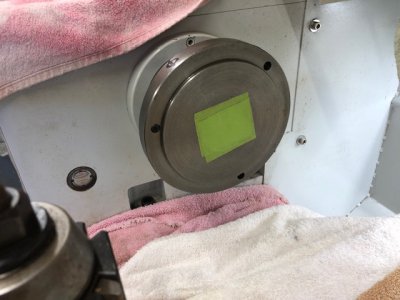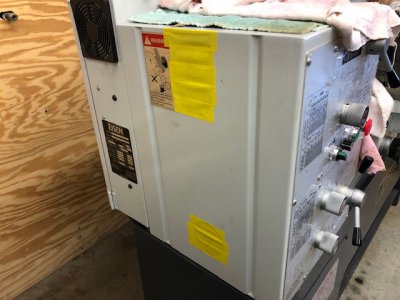Ok, I get it - abrasives particles and precision surfaces don't mix if you want the surfaces to stay precision.
So has everyone here thrown out or packed away their tool post mounted grinders forever? Logic would seem to indicate that these grinders are useful and desirable equipment otherwise they wouldn't be produced and sold.
Seriously, there are acceptable uses for grinders in combination with a lathe without serious damage to the lathe if the right precautions are followed.
I only have one direct experience using a grinder on lathe to correct the fit of large external threads on a hardened part. This was done by a very knowledgeable gentleman on a museum pice of a lathe. Reasonable (not excessive) precautions where taken to protect the lathe and to clean up afterwords.
I am interested in hearing more - I have an original equipment tool post grinder that I have considered using on occasion but have avoided doing so for lack of experience and fear of messing up my lathe.
I think there may be a little "throwing the baby out with the bath water" in some of the comments in this thread.
Interested in learning more!
Personally, I think it's a little more like throwing out enough of the bathwater so the baby doesn't drown. I have no experience with tool post grinders, but I can attest to the fact that when turning cast material, dust is created that gets everywhere - nooks and crannies in your equipment that you didn't even know existed. Think Etch-a-sketch size powder. Here are some shots of my lathe during the operation from my earlier post. I wish I had thought to take some pictures during the clean-up. You'd be able to see how fine the particulate was. Difficult to tell, but if you zoom in, you'll see some relatively finer particles on the insert, tool holder and tool post.
The first picture was before I started turning. It became apparent pretty quickly that the fine particles would be significant. I did not want to remove the tape with a build up of that dust, so I repositioned it inside the plate with loads of packing material behind it. The film you see on the back plate in the subsequent pictures is fine dust from the turning before I removed the tape.
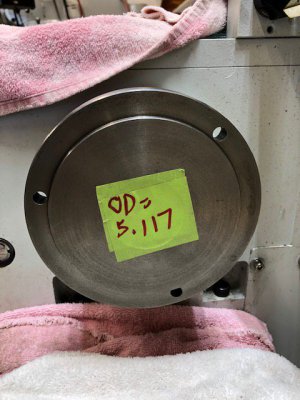
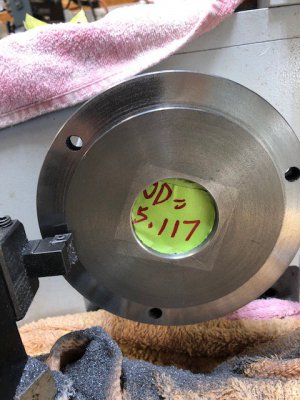
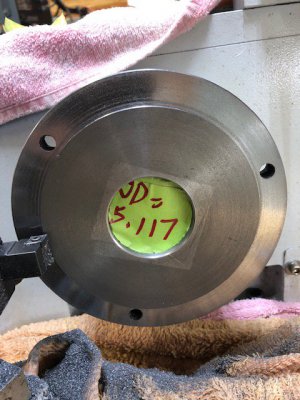
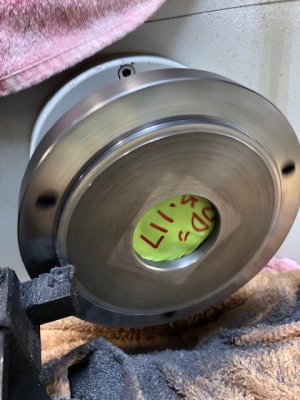
The stuff you see on the towel was the heavier particulate matter. The finer dust was pretty much everywhere - some you couldn't see on the towels, but you could pick it up with a magnet. I'd hate to think that stuff was anywhere near the spindle. Those towels ended up in the garbage.
After turning, I needed to drill mounting holes using my mill and rotary table. Even that produced a fair amount of granular crud but nothing on the order of the stuff on the lathe.
A good argument could be made that what I did was overkill. I'll spot you that. But it was recommended to me by one of our highly-respected resident experts. I'm glad I followed his advice because he was right. Like they say - better safe than sorry.
Regards,
Terry





